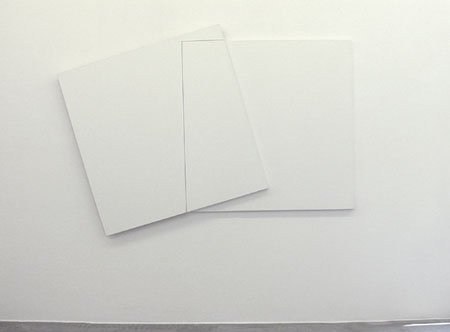
François Morellet, Superposition et transparence, 1980, 140 x 140 cm.
Spencer Finch, Sirous Namazi ,
William Copley, Monika Sosnowska, François Morellet, Bernard Frize, Astrid Svangren, Jason Brooks
»Pale Fire«
Berlin, June 07, 2003 - July 26, 2003
Around twenty years after it was published in 1962, cohorts of literary critics hailed Pale Fire, by the Russian émigré author Vladimir Nabokov, as the first "post-modern novel." With his mastery of different literary styles he dissolved the traditional literary narrative by breaking it up into a multitude of stylistic expressions and then grafting them back into a new context, whose claim to totality seemed as chimerical and deceptive, as any aesthetic product inevitably is.
We would like our visitors to this year's summer exhibition, to see the show as something of a 'nabokovan' experiment in the field of visual art. The nine artists are all representing different strategies towards the narrative tradition of painting. Some of the participants take a detour through other media-such as film, architecture or photography-in order to readdress the fundamental conditions of painting; while others uses formal experiments as a method to analyse the very boundaries of a genre that often has been declared dead, but always seem to reappear with increased vigour.
William Copley (? 1996)-an American artist, soldier, art dealer and millionaire- created a personal style, by some coined 'pop-surrealism,' consisting of collages, everyday scenes, fragments from comics and movies. In a way reminding of Picabia he more and more came to excel in bad taste and eroticised imagery, and it is not until later years that his unique qualities have become rediscovered.
The self-thought French painter François Morellet has since his debut in the 50s become famous for his paintings based on geometry and simple systems such as patterns and grids. Typical for Morellet is his playful and refreshingly un-sectarian exploration of the relationship between science and nature, as in his Superposition et transparence, 1980 present at the exhibition.
With his acute eye for what makes an image work and his technical brilliance, British artist Jason Brooks's realist paintings seems to use the camera as an intermediary, as is accentuated by the "cropped" character of the images, reminding of a freeze-frame fetched from a film. Flora, 2002, is in that regard a vintage example of his works.
The American artist Spencer Finch has developed an aesthetic approach that passes through a thorough phenomenological analysis of what it means to perceive light, colours and shapes. For this show he has made an installation of light tubes recreating the different colours of Times Square a night in April.
Frenchman Bernard Frize makes his knowledge of materials and techniques the main issue of an exploration into the origins of painting. His technique changes constantly, using different implements, from rollers to traînards (a thin brush used for very detailed work). Frize experiments have resulted in a body of work that consists of highly varied series, without any distinct stylistic coherence, but where aspects of chance and gravity plays a great role in hinting to his role as a modern translator of a painterly tradition.
The Iranian born Swedish artist Sirous Namazi works with wall objects and paintings often relating to architecture and contemporary architecture. Here he participates with a silicone sculpture reminding of a melted painting, and a framed image of a black window - fetched from the modernist high-rises, that began to scatter the outskirts of European cities in the 60s.
Also for the Polish artist Monika Sosnowska (who participates in this year's Venice Biennial) serves architectural aspects as a point of departure. In a powerful way she reconstitutes a painted surface from a series of sheets looking as parts of buildings. This duplicity can also be found in the motifs that first seem abstract-but actually reveal shadowy images of edifices.
The Swedish artist Astrid Svangren has a sophisticated way of using layers of shifting transparency to build up an image world consisting of contradictory elements, such as finely penned drawings and forcefully-almost expressionist- brushstrokes where depth and movement form important co-ordinates.
New York artist Jeffrey Wisniewski is on his side well known for his large scale, technically overpowering and logistically quite complex installations. In the later years he has more and more turned to painting-often as triptychs and diptychs in a small and almost intimate format that contrasts to his earlier works.
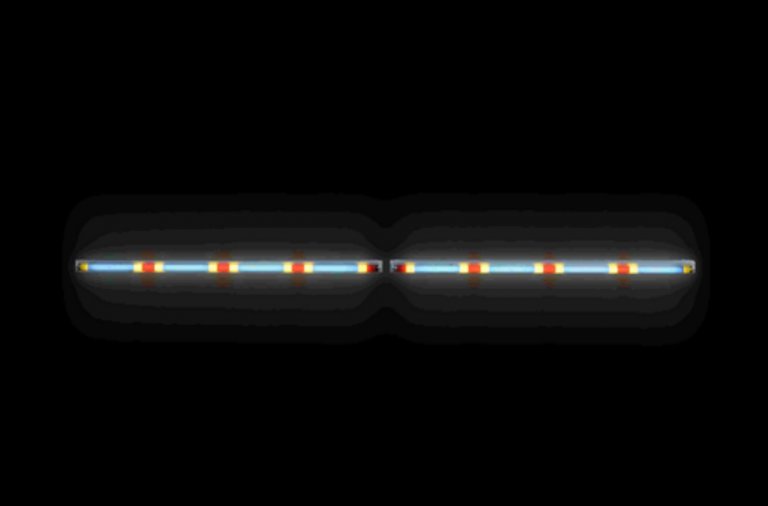
Spencer Finch: Study for New York Boogie Woogie (Times Square, April 27, 2003, 10 pm), 2003, 2 fluorescent lights, fixtures, filters, 5 x 260 x 5 cm
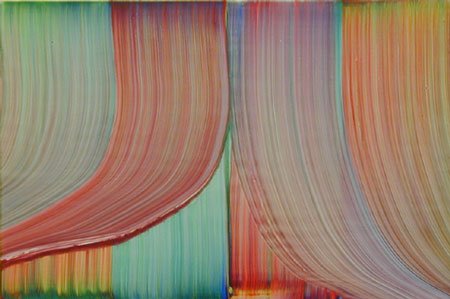
Bernard Frize, Zoom, 2003, acrylic, resin on canvas, 80 x 120 cm.
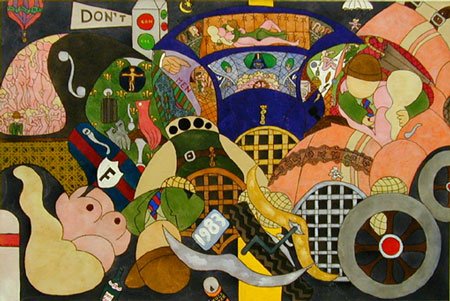
William Copley, The Accident, 1983, oil on canvas, 122 x 184 cm.
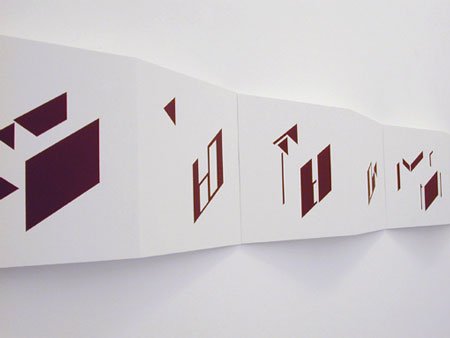
Monika Sosnowska: Untitled, 2003, acrylic on board, 29.8 x 545 x 7 cm (detail).
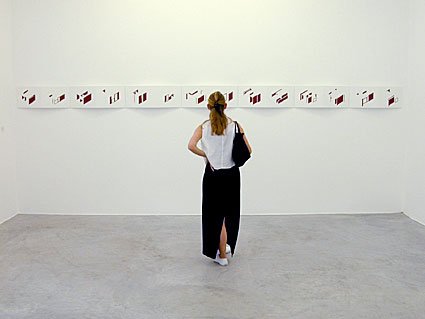
Monika Sosnowska, untitled, 2003, acrylic on board, 29.8 x 545 x 7 cm.
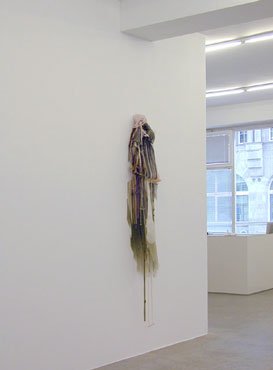
Sirous Namazi: Wall Object, 2003, silicone, ca 205 x 41 x 21 cm
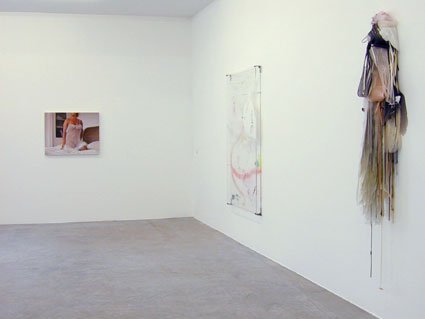
Installation view, "Pale Fire" Galerie Nordenhake Berlin
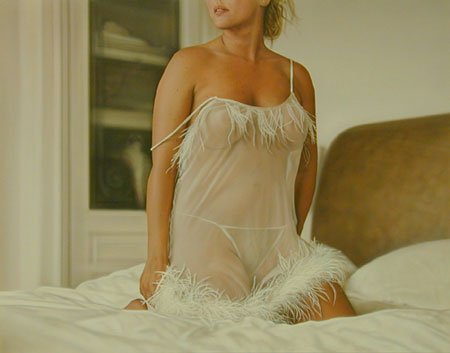
Jason Brooks: Flora, 2002, acrylic on linen, 89 x 96 cm.
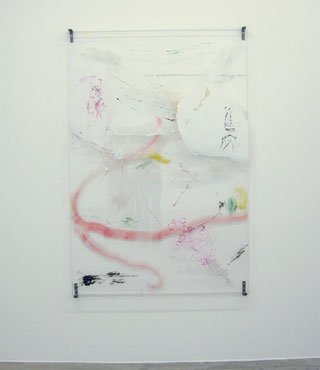
Astrid Svangren, untitled, 2003, acrylic, acrylic spray, colour and pencil on plexi-glass, 180 x 120 x 7.2 cm.